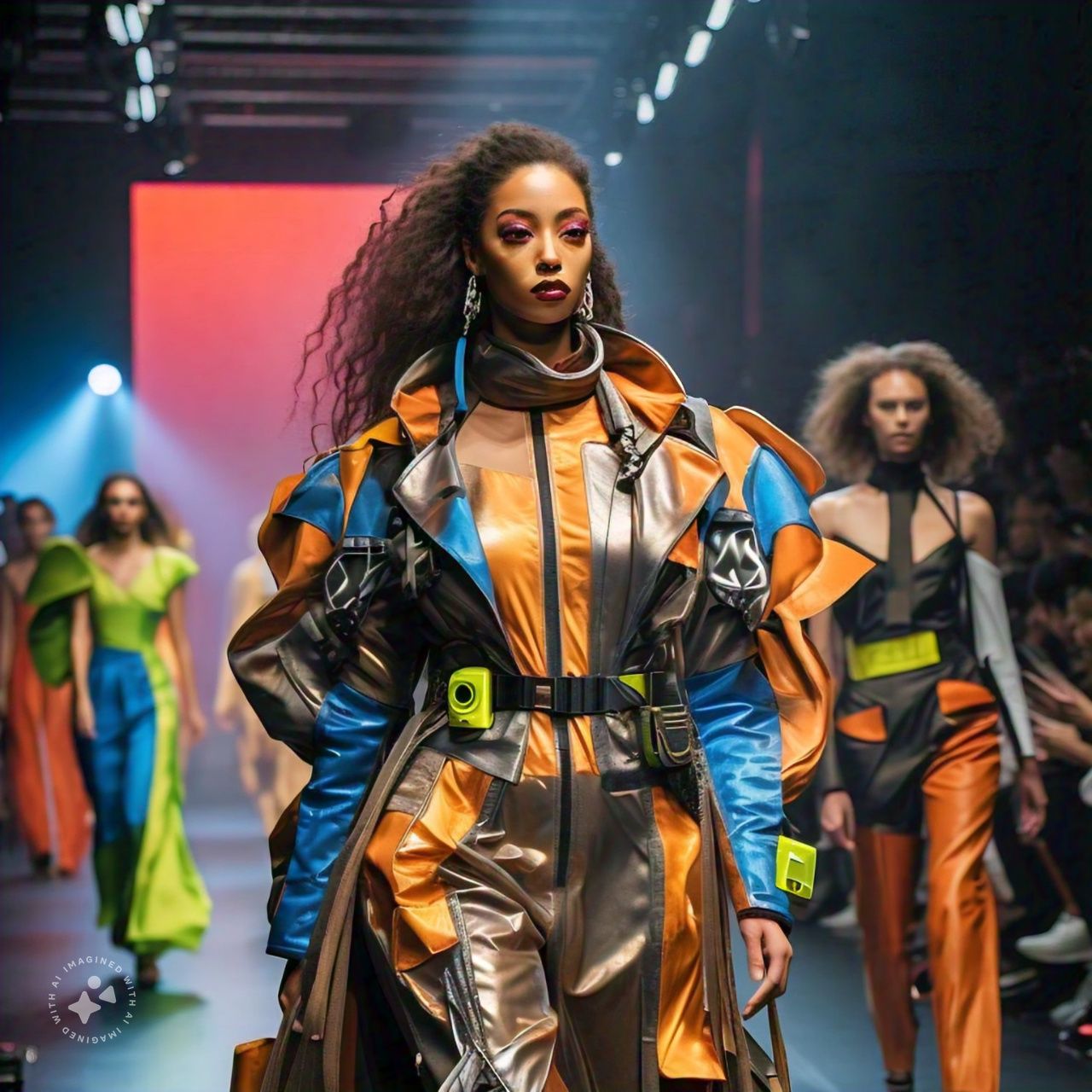Introduction
Avant-garde fashion, a term that originated from the French word “avant-garde” meaning “advance guard,” refers to clothing and accessories that push the boundaries of conventional fashion. It’s characterised by innovative, unconventional, and often provocative designs that challenge societal norms and expectations. Avant-garde fashion is more than just a style; it’s a movement that represents the intersection of art, culture, and fashion.
Avant-garde fashion shows play a significant role in the fashion industry by showcasing these bold and boundary-breaking designs. These events are platforms where designers can express their creativity without limitations, and where audiences can experience fashion as a form of artistic expression. Avant-garde fashion shows are often seen as theatrical performances, with elaborate stage designs, dramatic music, and models who perform rather than simply walk the runway. They are spectacles that capture the imagination and inspire both the fashion world and the general public.
The evolution of Avant garde fasion
The roots of avant-garde fashion can be traced back to the early 20th century, with designers like Paul Poiret and Elsa Schiaparelli who introduced innovative and unconventional designs. The 1960s and 1970s saw a surge in avant-garde fashion, with designers like Paco Rabanne and Pierre Cardin pushing the boundaries of fashion with their futuristic designs. The punk movement in the late 1970s and early 1980s, with its emphasis on DIY fashion and anti-establishment ethos, also had a significant impact on avant-garde fashion.
In recent decades, avant-garde fashion has continued to evolve, with designers like Alexander McQueen, Iris van Herpen, and Rei Kawakubo leading the way. These designers have embraced new technologies and materials, creating garments that are both innovative and thought-provoking. The influence of avant-garde fashion can be seen in mainstream fashion trends, with elements of avant-garde design appearing in ready-to-wear collections and street style.
Key Elements of Avant-Garde Fashion
One of the defining characteristics of avant-garde fashion is the use of innovative materials and textiles. Designers often experiment with unconventional materials, such as metal, plastic, and even organic substances, to create unique and visually striking garments. The use of technology, such as 3D printing and laser cutting, has also become increasingly common in avant-garde fashion, allowing designers to create intricate and complex designs that were previously impossible.
Bold and unconventional designs are another hallmark of avant-garde fashion. These designs often challenge traditional notions of beauty and aesthetics, with exaggerated silhouettes, asymmetrical shapes, and unusual proportions. Avant-garde fashion is not just about creating visually striking garments; it’s also about making a statement and provoking thought.
Notable Avant-Garde Designers and Their Impact
Several designers have made significant contributions to the world of avant-garde fashion. Alexander McQueen, known for his dramatic and often controversial designs, revolutionized the fashion industry with his bold and visionary approach. Iris van Herpen, renowned for her use of technology and innovative materials, has pushed the boundaries of what is possible in fashion. Rei Kawakubo, the founder of Comme des Garçons, is known for her avant-garde designs that challenge conventional notions of fashion and beauty.
These designers have not only influenced the fashion industry but have also had a broader cultural impact. Their designs have been featured in art exhibitions, film, and popular culture, and have inspired a new generation of designers to think outside the box.
Highlights of the Latest Avant-Garde Fashion Show
The latest avant-garde fashion show was a spectacle of creativity and innovation. Held in a futuristic venue with dramatic lighting and music, the show featured collections from some of the most renowned avant-garde designers. Standout collections included Iris van Herpen’s latest collection, which featured garments made from innovative materials and technologies, and Rei Kawakubo’s collection, which challenged traditional notions of fashion with its bold and unconventional designs.
The most talked-about moments of the show included a performance by a model who wore a 3D-printed dress that changed shape and color in response to her movements, and a collection inspired by the intersection of fashion and technology.
Cultural and Social Impact of Avant-Garde Fashion
Avant-garde fashion has a significant cultural and social impact. By challenging societal norms and expectations, avant-garde fashion encourages people to think differently and question the status quo. It promotes diversity and inclusivity by celebrating individuality and self-expression. Avant-garde fashion shows are also platforms for social and political commentary, with designers using their collections to address issues such as gender identity, sustainability, and social justice.
The fashion community and the general public often react with a mix of admiration and controversy to avant-garde fashion. While some may see it as too radical or impractical, others appreciate its boldness and creativity. Avant-garde fashion continues to push the boundaries of what is possible in fashion, inspiring innovation and creativity in the industry.
Conclusion
In conclusion, avant-garde fashion is more than just a style; it’s a movement that challenges societal norms and expectations. Avant-garde fashion shows are important platforms for showcasing bold and boundary-breaking designs, and for inspiring both the fashion world and the general public. As avant-garde fashion continues to evolve, it will undoubtedly continue to push the boundaries of fashion and inspire innovation and creativity in the industry.
FAQ’s
What is avant-garde fashion?
Avant-garde fashion refers to innovative, unconventional clothing designs that challenge traditional fashion norms and aesthetics.
What can I expect from an avant-garde fashion show?
Expect a blend of art and fashion with bold, experimental designs, dramatic presentations, and a theatrical atmosphere.
Who are some notable avant-garde fashion designers?
Designers like Alexander McQueen, Iris van Herpen, and Rei Kawakubo are renowned for their avant-garde creations.
How does avant-garde fashion influence mainstream trends?
Avant-garde fashion often introduces new ideas and materials that gradually become incorporated into mainstream fashion.
What role does technology play in avant-garde fashion?
Technology is crucial, with innovations like 3D printing and laser cutting enabling designers to create unique, complex designs.
